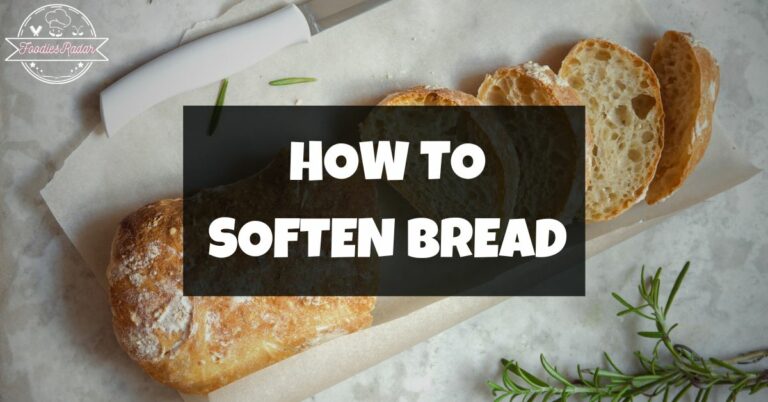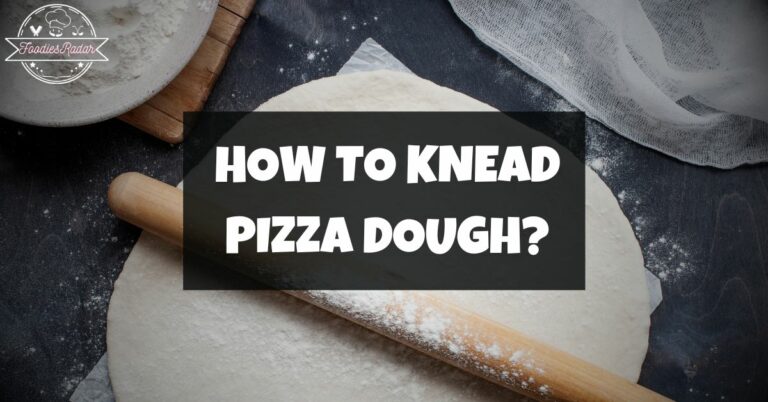
There is nothing quite like biting into molding bread. Yes, it is a nightmare. Don’t worry if your bread has been molding recently. Bread can be preserved by freezing or using different ingredients.
In addition to a delicious slice of fudgy, rich, sticky, and gooey chocolate cake, nothing beats freshly baked bread served with warm grass-fed butter. Although that was a stretch, bread is fantastic. The only drawback is how quickly it turns moldy.
We buy a lot of bread because we love all kinds of bread. Bread for sandwiches at lunch, sourdough toast for dinner, and garlic bread. Because of this, figuring out how to stop mold was so important to us.
Despite its joy, bread has a significant flaw: a short lifespan. You are more concerned about your favorite loaf becoming stale than you are about it growing mold. Whether they buy store-bought or make their own, no one wants to see mold on their bread.
What Factors Lead To The Growth Of Mold On Bread?
Several factors lead to the growth of molds. Molds can only develop in certain conditions.
The molds need enough water, not too much, and they should have enough food and a comfortable temperature. Because it contains so many carbohydrates, bread always has enough food.
Temperature:
Most molds thrive between 30 and 37 degrees Celsius at room temperature. But, there is some variation based on the type of mold.
Yet, if you store your bread in a sealed plastic bag on a warm summer day, molds may develop more than on a cold winter day.
Mold growth is nonexistent at temperatures well below zero degrees Celsius. It will halt the expansion. If stored at -18°C, frozen bread will not mold even after years. While molds are killed in an oven, they are likely to return once the bread is out of range.
It’s Time:
Even if bread is kept from molding, it will become unusable. The fact that the last few slices of bread are stale does not need throwing them away.
Placing bread in a warm oven for a few minutes is the trick to reviving it. Place the whole loaf or a few slices on a parchment-lined cookie sheet.
The bread will become almost as fresh as it was when it is heated for about three to five minutes.
Food Source:
At the point when you heat your bread, you will most likely utilize a couple of fixings: depending on the kind of bread, flour (or a variety of flours), water, yeast (or a sourdough starter), salt, and some milk, butter, or eggs.
Some extra ingredients help prevent mold growth, while others enhance the bread’s sensory properties.
There is a good chance that the bread you buy from a bakery or supermarket has at least one of the ingredients mentioned earlier, but it could also have many more. We will save the specifics for a subsequent post and not discuss them here.
Utilizing lactic acid bacteria, which produce acids that prevent mold growth, is an alternative. Currently, sourdough bread is the most common application for these.
Vinegar and some spices, like cinnamon and cloves, might also stop mold from growing. Yet, the herbs may alter the bread’s flavor and aroma, so their use for this purpose is limited.
Oxygen:
Molds are primarily obligate aerobes. This indicates that to complete their metabolism, they need oxygen, not “air.” Yet, many molds can reproduce (grow) at low oxygen gas concentrations.
In the absence of oxygen, anaerobic organisms cannot reproduce. Oxygen is one of the most significant causes of getting moldy and stale in the food industry. It leads to oxidation, microorganism growth, and food spoilage and causes harmful diseases.
What Indicators Show That Bread Has Gone Moldy?
Bread mold typically begins as white or is white most of the time. Isn’t it easy? Exactly not. A flour coating is applied to the top of some bread, such as artisan bread. It gives the desired rustic look and is accessible to the eyes and palette.
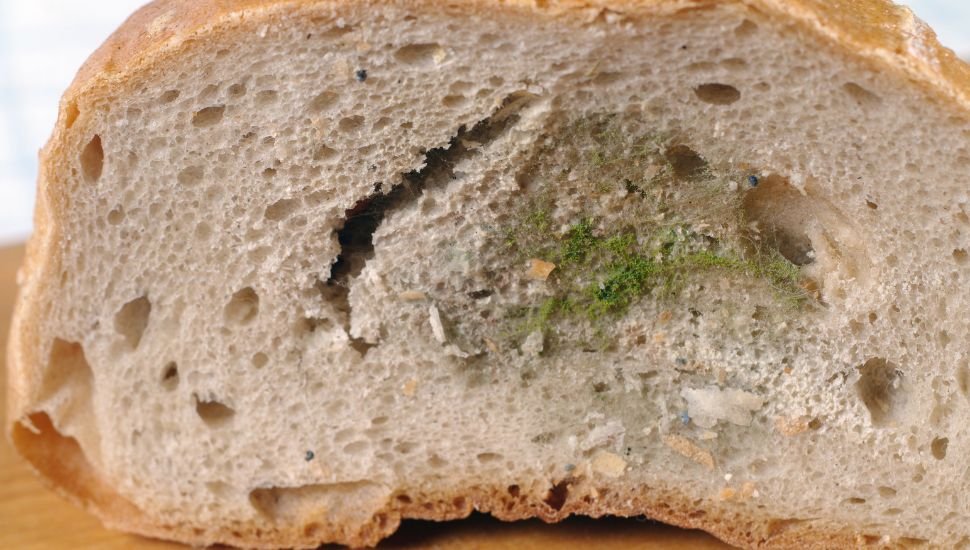
Mold is a fungus that grows on bread or other food sources. The bread is broken down, and the nutrients are absorbed over time by mold colonies.
Each of the five molds that can grow on bread has a wide range of possible species. There are five kinds of mold:
- Aspergillus
- Penicillium
- Fusarium
- Mucor
- Rhizopus
Simply looking at bread is the most effective method for determining whether it is moldy.
It is almost impossible to decide which mold is growing on your bread because there are five distinct mold types and even more subspecies within each class.
Whatever the “type” of mold infecting your bread, you can look for these colors:
- Yellow
- Green
- White
- Black
- Grey
How To Keep Bread From Molding?
Using a bread bin, cloth bread bag, or even a paper bag to store your loaves is the best way to prevent mold.
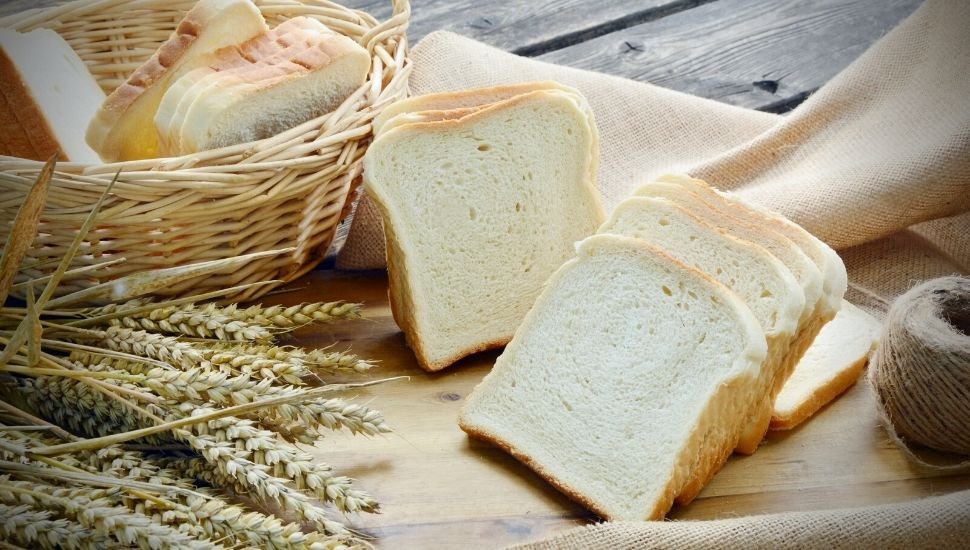
By storing the bread in an airtight or nearly airtight container, you can keep it safe from heat, sunlight, and oxygen.
There are some ways to keep the bread from molding. Some of them are discussed below:
#1- Bread Boxes
Have you ever wondered what bread boxes are used for? Not only do they look better than plastic bags, but they also help eliminate some of the things that cause mold to grow.
The bread is shielded from light from the outside by these boxes. The bread bags retain a high temperature and produce excessive moisture when exposed to light.
These two significant elements encourage mold growth. Additionally, it aids in decreasing the amount of oxygen available for their growth.
When a loaf of bread is placed inside one of these bread boxes without its bag, of course, it creates just the right amount of air circulation to prevent mold from growing and enough humidity to prevent the bread from completely drying out.
#2- Keeping Your Bread In A Freezer
Keeping bread in the freezer is one of the best ways to prevent it from molding (see more in-depth tips for freezing and defrosting). Slice your bread before freezing it if it is unsliced so you can use individual slices instead of the entire loaf when you need them.
Your bread will stay fresh and mold-free using the freezer method. Slices will easily break apart when you need bread, but you want to keep the whole loaf out of the freezer. Simply take what you need and wrap the rest up carefully to store in the freezer.
#3- Bread Bags
Think about how artisanal shops store and sell their products if you ever need to figure out the best way to keep ingredients. Due to their effectiveness, brown paper bags and cloth bread bags are frequently utilized.
Avoid plastic bags at all costs due to their lack of ventilation and moisture accumulation inside.
Bread bags made of cloth, parchment wrapping paper, and brown paper all allow for adequate ventilation to stop mold growth and prevent the loaf from drying out.
Paper bags are ideal for crisp or hard-crusted bread, whereas cloth bags are preferable for white French bread, also known as semi-hard bread.
#4- Cut The Bread Down The Middle
Cutting bread from the middle rather than the end preserves its freshness and prevents mold growth. Before storing the bread, just keep pressing it together again.
With just enough moisture to keep the loaf soft without turning moldy, the end crusts will keep it fresher longer.
Cut fresh, mold-free unsliced bread in the middle rather than at the end when slicing it. Before storing the bread, simply keep joining it back together.
With just enough mist to keep the bread soft without turning moldy, the end crusts will keep it fresher longer.
#5- Place In Kitchen Cabinet Cupboard
Can safely store bread in a kitchen cabinet to prevent mold growth. Place the loaf of bread in an open plastic bag or paper sack.
The cabinet will circulate just enough air to keep mold from growing but not too much air that will cause the bread to dry out too quickly and get moisture.
Choose a cabinet that isn’t above the fridge, where heat and humidity can happen, if you want to try this.
#6- Avoid Storing In Plastic
Mold thrives in just the right conditions, and keeping your bread in a tightly packed plastic bag will provide those unfavorable conditions, including moisture and warmth.
Plastic may have some negative impact on the bread, and due to this reason, this may result in molding.
If you have to keep bread in a sealed plastic bag, keep it off the sun and on your countertop. If you leave the bag open, some airflow will enter the bag, preventing mold growth.
#7- A Brown Paper Bag.
Bread will not mold if placed in a clear brown paper bag. Because of this, many bakeries package their bread on brown paper.
Bread bags made of cloth, parchment wrapping paper, and brown paper allow adequate ventilation to prevent mold growth and the loaf from drying out.
Simply close the bag tightly and store it away from direct sunlight. This method keeps bread fresh for up to two days and is excellent for hard-crusted, rustic pieces of bread.
#8- Store Your Bread In The Refrigerator.
Store it in an airtight bag or container to keep moisture from getting into the bread and growing mold. The refrigerator provides a dry and cool environment for bread storage. – Slice bread before storing it because the bread that isn’t sliced is more likely to grow mold.
If you wait a long time to eat, especially if the bread is homemade, and if your kitchen is warm and damp. It’s worth refrigerating to stop mold growth.
Is Eating Moldy Bread Harmful?
Not only does moldy bread taste bad, but eating certain kinds of mold can be very bad for your health. Eating moldy bread could very well make you sick. Fortunately, there are far less dangerous molds than the ones that ruin your Sammy.
Your stomach is in a harsh environment with a lot of acids. There are very few substances and very few microscopic lifeforms that can survive there. People who have a healthy gut and immune system will be fine.
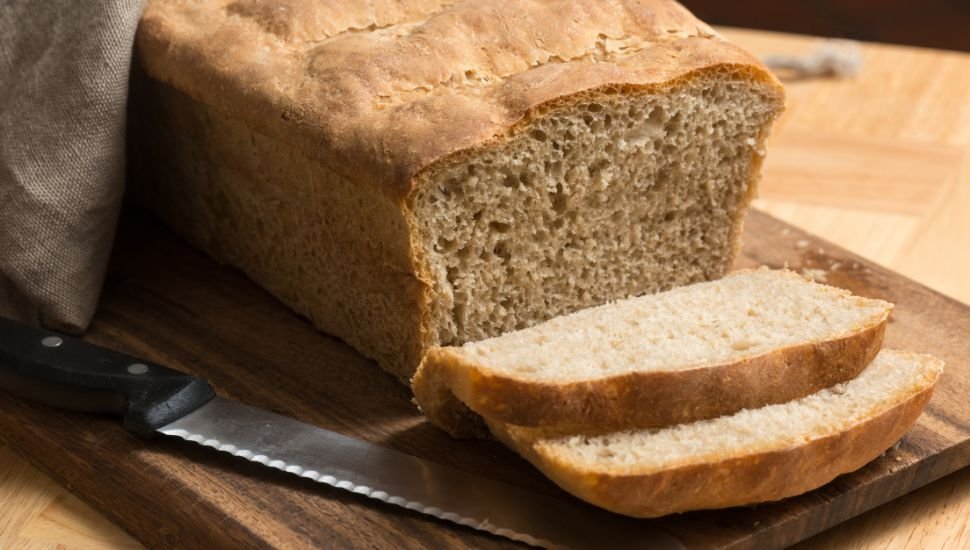
The mold that rises on bread is not the same; it is neither a harmless source of fiber nor a flavor enhancer. Some individuals may experience allergic reactions or respiratory issues due to these mold types.
Both breathing in the mold and ingesting it are connected to these symptoms. To prevent mold spores from escaping each time you open the garbage can,
You should dispose of it in a plastic bag that can seal.
Final Verdict:
You can only store freshly baked bread for a short time. The slices of bread never turn moldy. It has lost freshness well before it has time to change.
Within three to four days, my homemade pieces of bread become dry and challenging, and their quality has decreased.
Instead of purchasing commercial yeast, use a sourdough starter. An additional benefit of this is that it results in a loaf of bread that is more resistant to mold and spoilage.
Another strategy is incorporating ingredients that mold does not absorb as quickly and easily.



